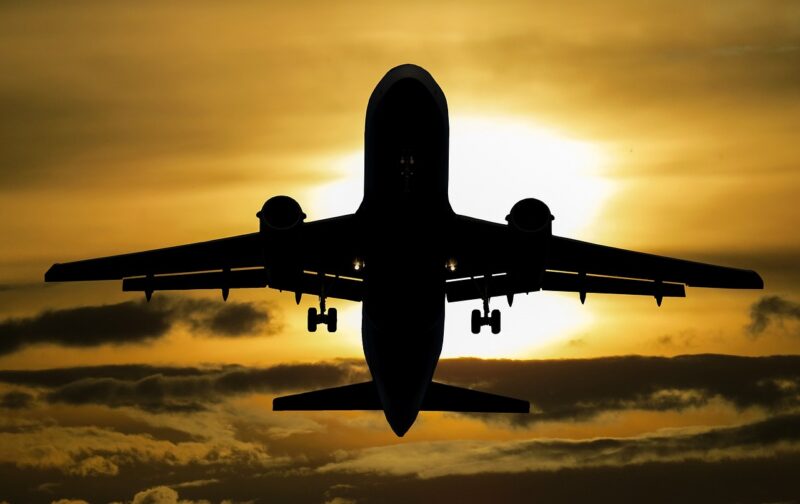From Takeoff to Landing: A Look at the Exact Process of Commercial Flights
November 11, 2024

The journey of a commercial flight is a marvel of modern aviation, involving meticulous planning and coordination to ensure safety and efficiency. From the moment passengers arrive at the airport to the time they disembark at their destination, each step of the flight process plays a critical role in creating a seamless travel experience.
1. Pre-Flight Preparations
Before a commercial flight can take off, extensive preparations occur. This process begins well before the aircraft arrives at the departure gate, starting with flight planning and ending with the boarding of passengers.
Flight Planning
Flight planning is a crucial aspect that involves pilots and air traffic controllers. Here’s how it typically goes:
- Route Selection: Pilots review potential flight paths that optimize fuel usage and avoid dangerous weather conditions. They take into consideration air traffic, geographical obstacles, and even nocturnal wildlife activity in certain areas.
- Weight Calculations: Each flight has weight limits for safety reasons. Pilots calculate the total weight of passengers, luggage, and cargo to ensure compliance with these regulations.
- Weather Analysis: Pilots and dispatchers check weather forecasts to anticipate any conditions that may affect the flight. This can include turbulence, storms, and airport visibility.
Aircraft Preparation
The aircraft undergoes vital checks before each flight. This includes:
- Pre-Flight Inspection: A thorough inspection by ground crew ensures that the aircraft is fit for flight, checking systems, fuel levels, and safety equipment.
- Loading Passengers and Cargo: Passengers check-in and board the aircraft while baggage and cargo are loaded into the plane, all tracked to ensure every piece is accounted for.
2. Takeoff Procedures
Once on board and ready for departure, the plane is prepared to take off. Here’s what happens:
Safety Briefing
Before takeoff, the flight attendants conduct a safety briefing for passengers, showcasing emergency exits, life vests, and the use of oxygen masks.
Pushback and Taxiing
The aircraft is pushed back from the gate, often assisted by a tug. After this, pilots navigate the taxiways to the runway, guided by air traffic control. During this time, final checks are performed to ensure systems are operational.
Takeoff
When cleared for takeoff, the pilots line up the aircraft on the runway. Once ready, they throttle up, the engines roar, and the aircraft races forward. At the appropriate speed, they pull back on the yoke, and the aircraft ascends.
3. In-Flight Operations
Once airborne, various tasks continue to ensure a safe and pleasant flight:
Climbing and Cruising
After takeoff, the plane will climb to its cruising altitude, where it will spend most of its journey. At cruising altitude, the pilots maintain contact with air traffic control, which monitors the flight and gives instructions as needed.
Cabin Service
Flight attendants begin cabin service, providing refreshments, meals, and any required assistance to passengers. This is also when they conduct periodic checks to ensure everyone is safe and comfortable.
Monitoring Systems
Pilots continuously monitor various systems in the cockpit, including fuel levels, navigation, and communication systems, to respond to any issues promptly.
4. Descent and Landing
As the flight nears its destination, the process of descent and landing begins:
Descent
The pilots begin the descent to the destination airport, notifying cabin crew to prepare for landing. Passengers are advised to fasten seatbelts as the aircraft descends gradually, and pilots communicate with air traffic control to get the latest landing instructions and weather updates.
Final Approach and Landing
As the plane aligns with the runway, the descent becomes steeper. Upon touchdown, pilots deploy the brakes and reverse thrust to safely slow the aircraft. Once on the ground, the aircraft taxis to the arrival gate.
5. Post-Flight Processes
After the flight has landed, several important processes happen:
Disembarking Passengers
Once the aircraft reaches the terminal gate, the flight attendants assist passengers in disembarking. People exit the plane in an orderly fashion, allowing for the timely offloading and cleanup of the aircraft.
Baggage Claim and Turnaround
Baggage handlers work to unload and transport luggage to the baggage claim area for passengers to collect. Simultaneously, ground crews prepare the aircraft for its next flight, which includes refueling, cleaning, and maintenance checks.
Flight Crew Debriefing
Finally, the flight crew conducts a debriefing to review any issues encountered during the flight. This is critical for continuous improvement in flight safety and operations.
Conclusion
The journey of a commercial flight is a complexity of actions packed into a few hours. Each step is essential for ensuring safety and a pleasant experience for passengers. Understanding this process not only enriches the passenger experience but also highlights the remarkable efficiency of modern aviation. Next time you board a flight, appreciate the intricate processes behind the scenes that bring you safely to your destination.





